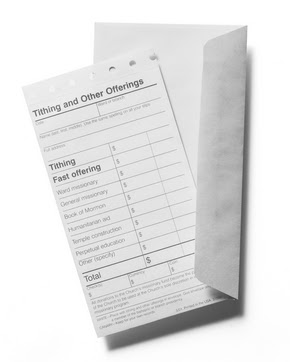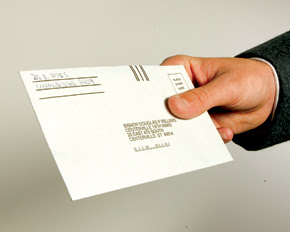Today's post concerns an inaccurate assumption made by a reporter, Stephanie Mencimer for Mother Jones Magazine in an article entitled, "Glenn Beck: Televangelist." As I have made clear on this blog ( 03/15/10 and 10/25/09), I am no Beck fan but the reporter made a serious mistake.
Beck talked wistfully about the spiritual transformation he underwent after he embraced tithing, which is heavily encouraged by his Mormon church. He said at first he was resistant, happy to show off the $20 he put in the plate on Sunday morning, but not much else. But now, he said earnestly, "It is my joy and my honor to tithe 10 percent."
We don't use a collection plate, never have and never will. Tithing is handled much differently than this reporter assumed.
Tithing is a basic concept in our religion. It is explained thoroughly in the Encyclopedia of Mormonism, the Church's official web page and our Bible Dictionary.
The manner in which we pay tithing is different from any other religion of which I have knowledge.
First we obtain a tithing slip and envelope. They are available somewhere in our local meetinghouses, usually in a small holder close to our local leaders' offices. We compute our tithing ourselves and fill out a tithing slip. There are many different funds we can contribute to in addition to tithing. The tithing slip has two sheets, one of which is a carbon. The carbon becomes our initial "receipt." See the image below:
We place our money and the top sheet of the tithing slip into the provided envelope and seal it. In the image below, notice that there is a full address for the local leader of our congregation. There are lines for a return address and a box for a postage stamp.
Usually, we bring our completed envelopes to our three hour block of Sunday meetings and hand it to one of three designated leaders during the course of the day. This confidential hand off can occur anywhere or anytime though. It can also be mailed through the post office.
The envelopes are usually opened after our regular Sunday worship services are over. Church leaders have standardized procedures that they must go through in opening the envelopes, recording the money, depositing the money, etc. These are strict and standard accounting controls including who and how many leaders must be present when the envelopes are open and the money is counted and recorded.
At the end of a calendar year, members voluntarily go to "tithing settlement" where official church records are compared against the member's own records and any reconciliation takes place. The member also tells church leaders whether the tithing is full or partial. Paying a full tithing means a member pays ten percent of gross income. This declaration is made on the honor system. The local leader takes the members word for it.
As you can see, there is nothing even remotely resembling a "collection plate." I hope this reporter, and others, will take more care in what they write.
Continue reading at the original source →







